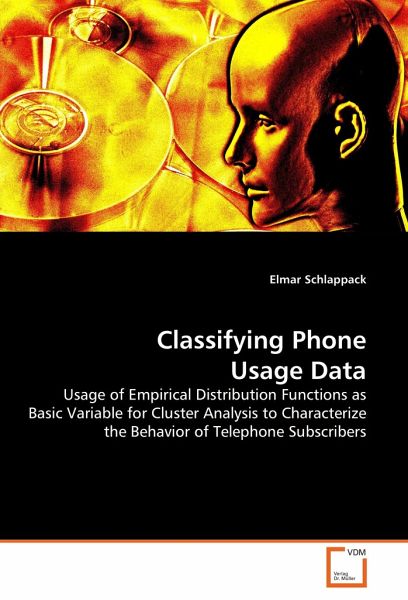
Classifying Phone Usage Data
Usage of Empirical Distribution Functions as Basic Variable for Cluster Analysis to Characterize the Behavior of Telephone Subscribers
Versandkostenfrei!
Versandfertig in 6-10 Tagen
52,99 €
inkl. MwSt.

PAYBACK Punkte
26 °P sammeln!
Examples how a provider of telephone services is able to identify customers who run a dialler or how a company is able to identify who mainly answers inbound calls illustrate a new approach to cluster analysis. It has been assumed that the empirical distribution function is appropriate for classifying behaviour of telephone subscribers. Therefore its suitability and possible alternatives are studied. Since no standard function for computing the dissimilarity matrices were available, a function has been designed in the programming language C that neither limits the size of the target data nor t...
Examples how a provider of telephone services is able to identify customers who run a dialler or how a company is able to identify who mainly answers inbound calls illustrate a new approach to cluster analysis. It has been assumed that the empirical distribution function is appropriate for classifying behaviour of telephone subscribers. Therefore its suitability and possible alternatives are studied. Since no standard function for computing the dissimilarity matrices were available, a function has been designed in the programming language C that neither limits the size of the target data nor the length of the dissimilarity matrix. The clustering methods from Kaufmann and Rousseeuw are used which accepts a dissimilarity matrix as input. The use of the method is clearly exemplified within the scope of the KDD process (knowledge discovery in databases). Moreover, a very simple example is given which emphasis that the method is capable of being applied to very different fields.












